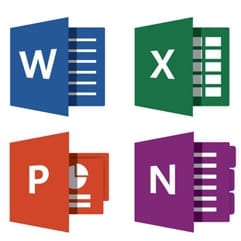Technology can help bridge the gap as cures are sought for ALS
On Friday, GLEASON, the critically acclaimed documentary about former NFL player Steve Gleason, will open in select theaters across the U.S. GLEASON tells the incredibly powerful story of Steve’s life both leading up to and after his diagnosis in 2011 with amyotrophic lateral sclerosis (ALS), or Lou Gehrig’s disease. I’ve been fortunate to see the documentary a few times over the last few months and I’ll be honest, you’ll need tissues and strong stomach muscles. It is real, gritty, warm, humbling and hilarious. The Gleasons have a relentless drive to empower others with ALS to ‘live’ and live a life that is worth living, and I know I’m not the only one who feels unbelievably lucky to partner with Team Gleason on technology to help support that goal.
Microsoft’s work with Team Gleason got ignited two years ago this week at //oneweek, our annual hackathon where thousands of Microsoft employees spend days poring over projects that have a real impact. Steve had issued a challenge to Microsoft to develop technology to help people with ALS, specifically to help him communicate more easily, play with his son and move his wheelchair independently. The 2014 //oneweek Ability EyeGaze hackathon team came together to tackle that challenge and ended up winning the whole hackathon that year.
Two years on, Team Gleason and Steve continue to work on these goals with the Microsoft Enable team in Microsoft Technology and Research, producing technology that enables people to move their wheelchairs and communicate through their keyboards using nothing more than the movement of their eyes. The passion and dedication of everyone that has touched this project has been overwhelming; it’s been a remarkable experience in which to participate. In that time, the project has evolved from an early stage hack into technology that helps Steve do exactly what he asked: be more independent. Steve is regularly using the technology to get around and to communicate with friends and family, just as he had envisioned at the beginning.
The technology may now be real and have a lot less duct tape involved than when we first started, but the work is far from done. We are still in the research phase and are continuing to improve it – even here at //oneweek this week – with the goal of making it available to everyone who can benefit from it.
We have learned so much along the way from many families impacted by ALS and we are humbled by their generosity. We know that technology has the power to change lives and we are fired up at the chance to work with so many amazing people to help make that possible.
To stay up to speed on the latest developments in accessibility, visit the Microsoft Accessibility website. You can also read more about exciting new research projects like this on the Microsoft Enable team’s website. And follow us on Twitter at Microsoft Accessibility (@MSFTEnable), Microsoft Research (@MSFTResearch) and Team Gleason (@TeamGleason).
Lastly, please, go see this documentary, and you’ll see why we’re so passionate.
As Steve says, ‘Until there is a cure for ALS, technology is the cure.’
Continued Reading

July 29, 2016
7 simple calendar tricks that will level-up your team’s productivity
7 simple calendar tricks that will level-up your team’s productivity […]
LEARN MOREinthetechknow

July 29, 2016
Enhancing information rights management in Word, Excel and PowerPoint mobile apps
Enhancing information rights management in Word, Excel and PowerPoint mobile […]
LEARN MOREOffice365



